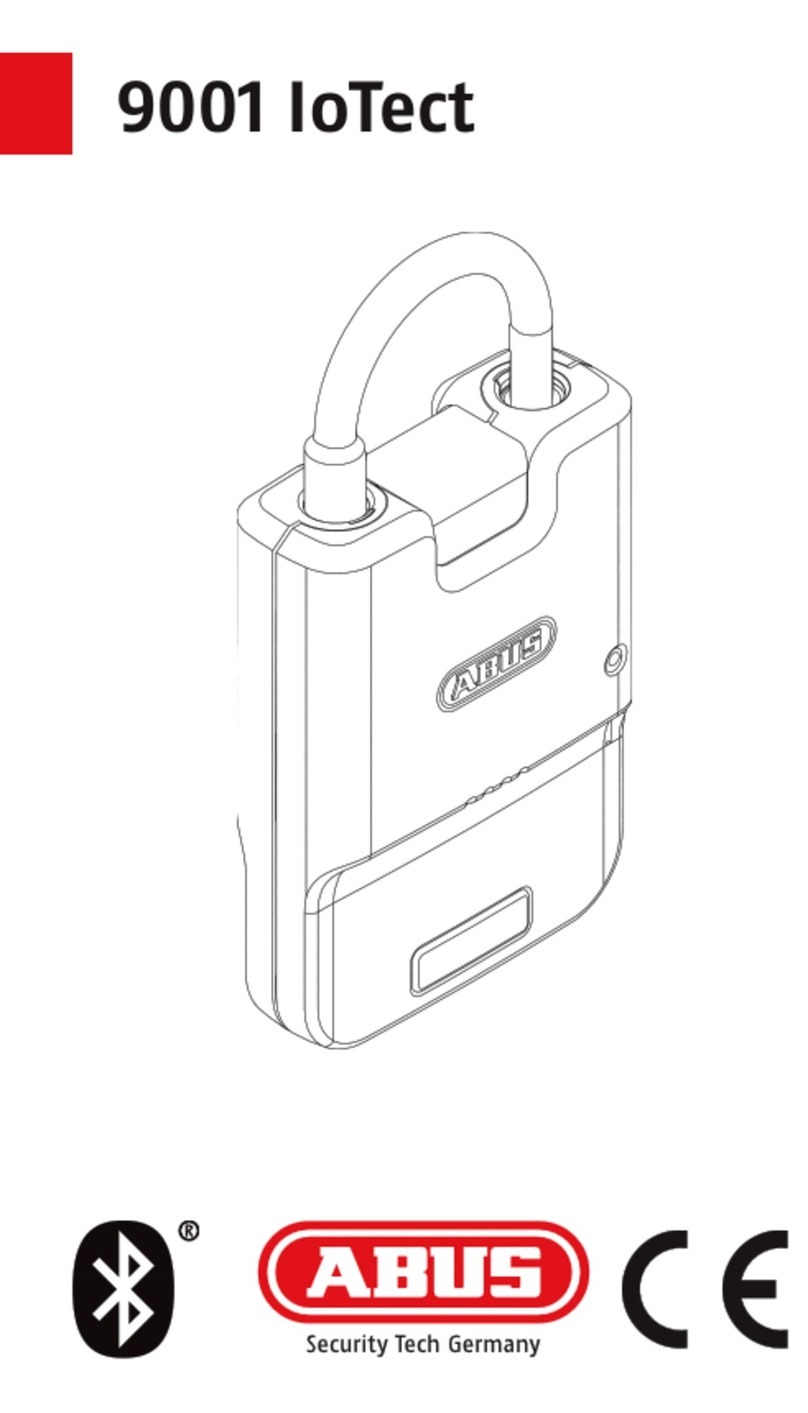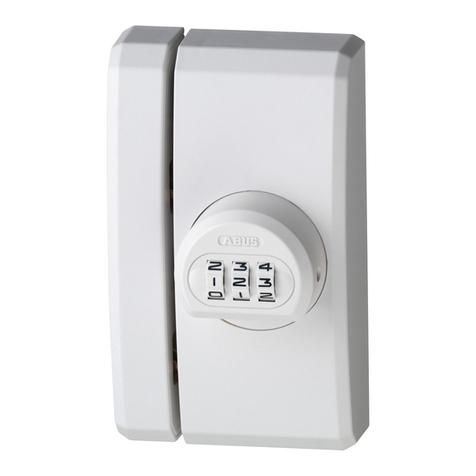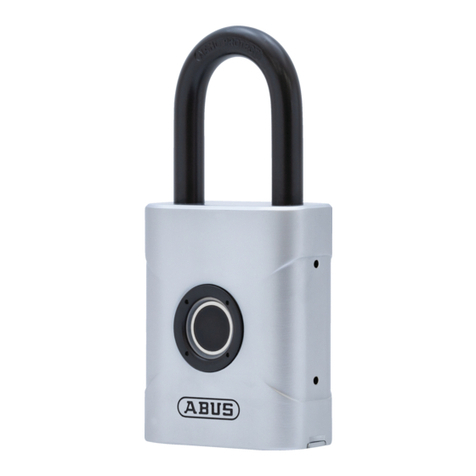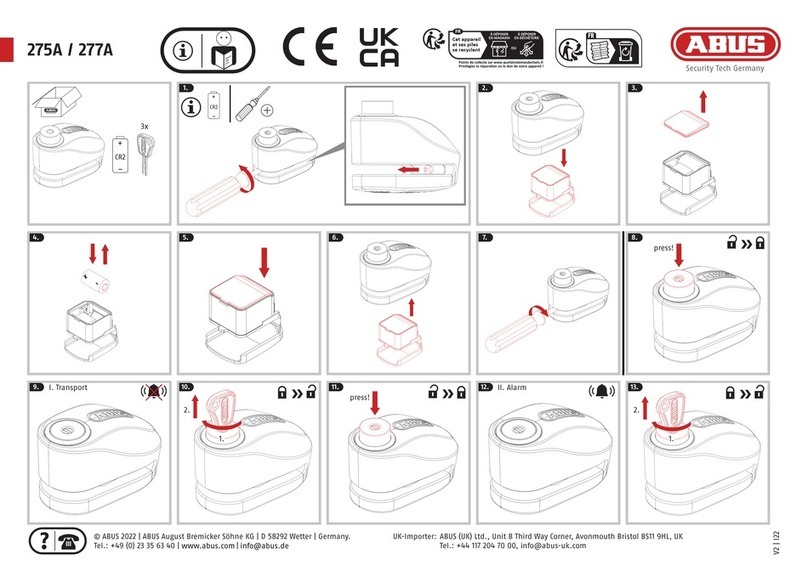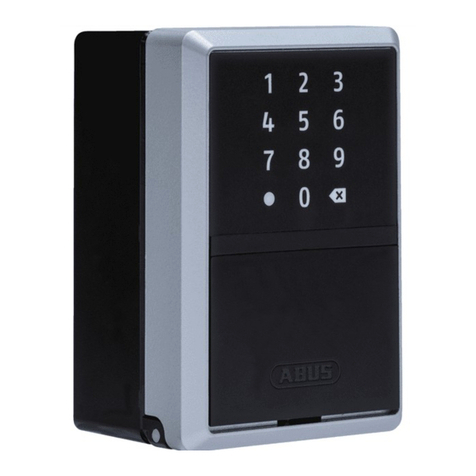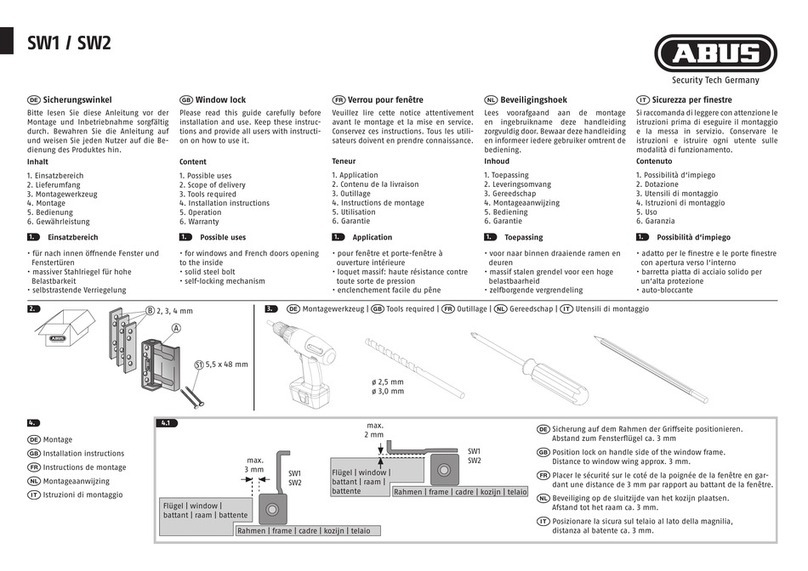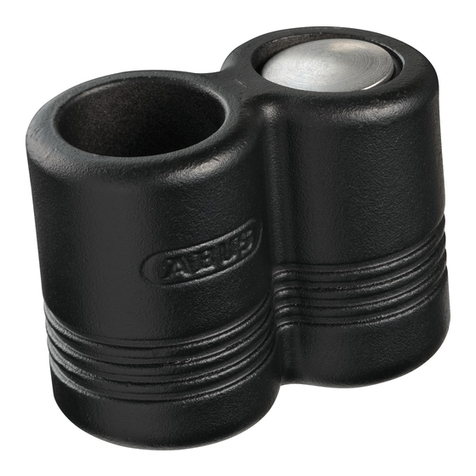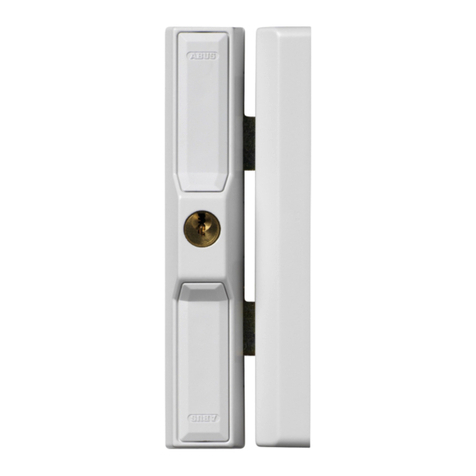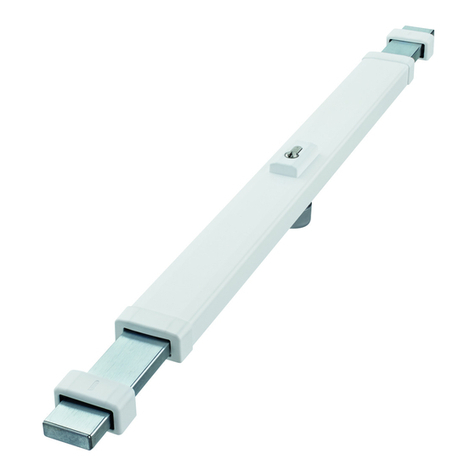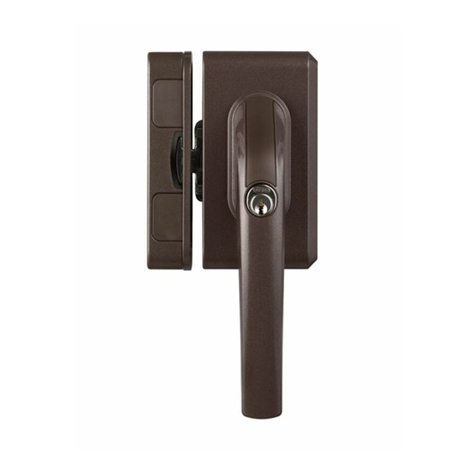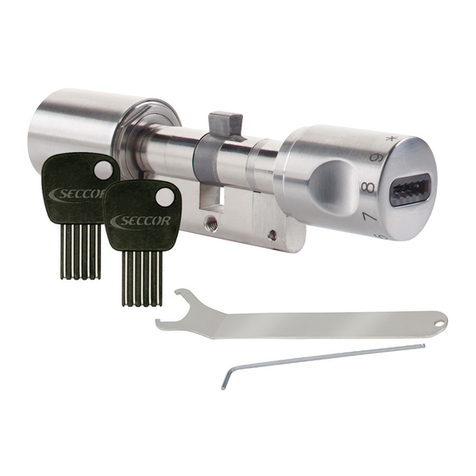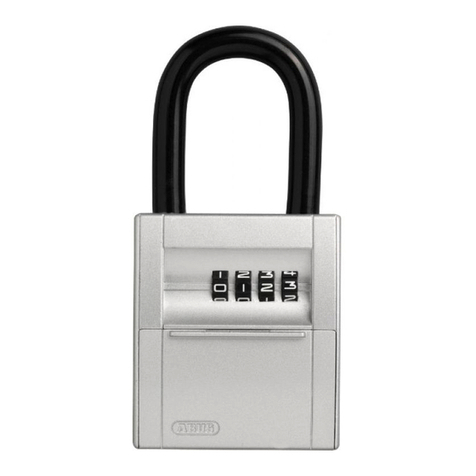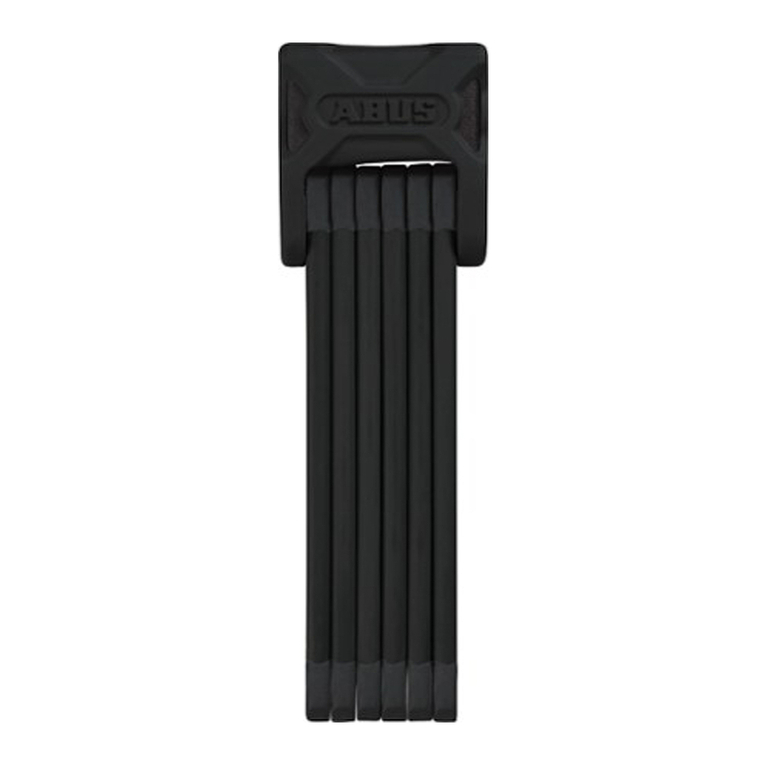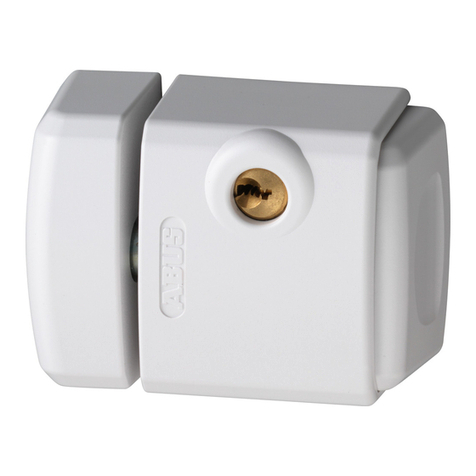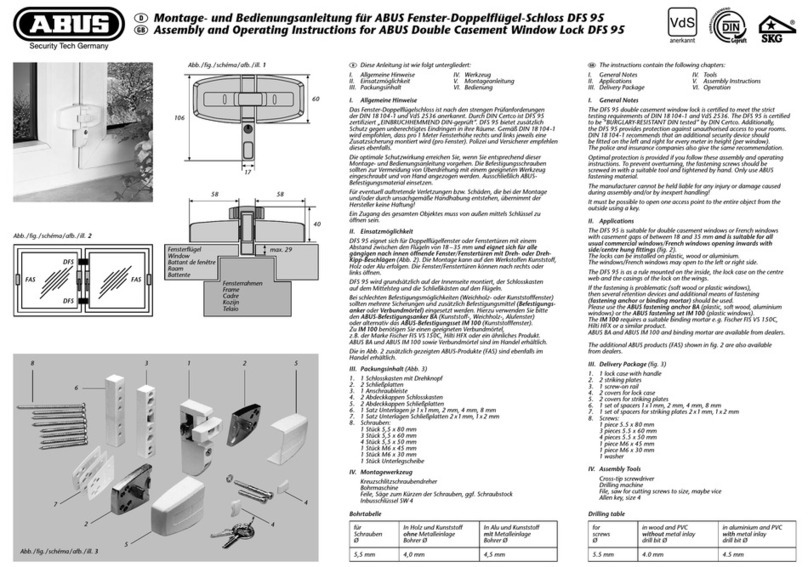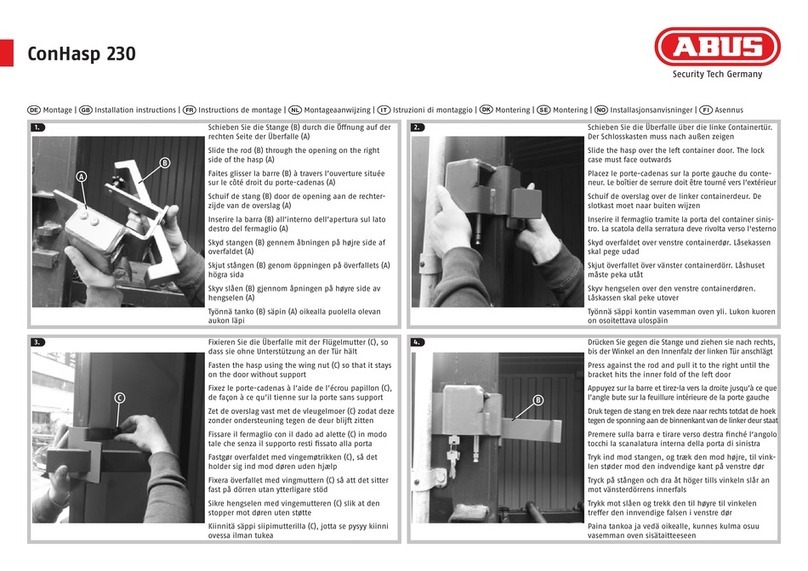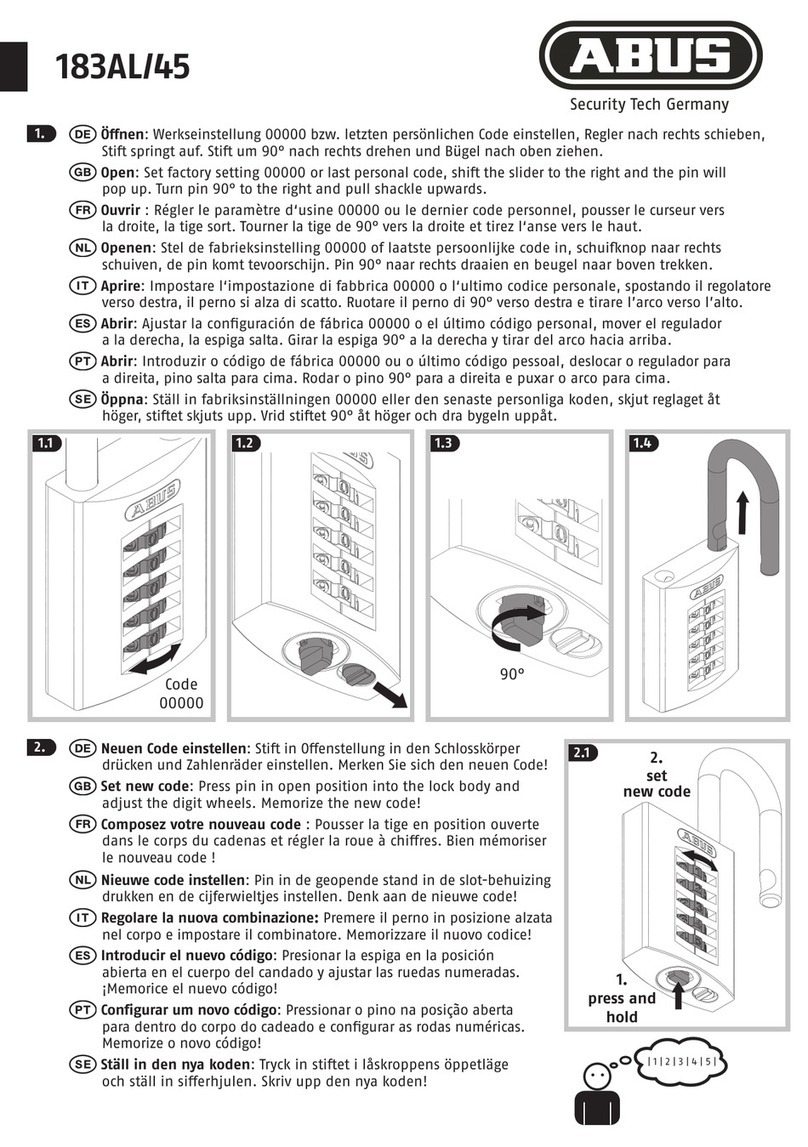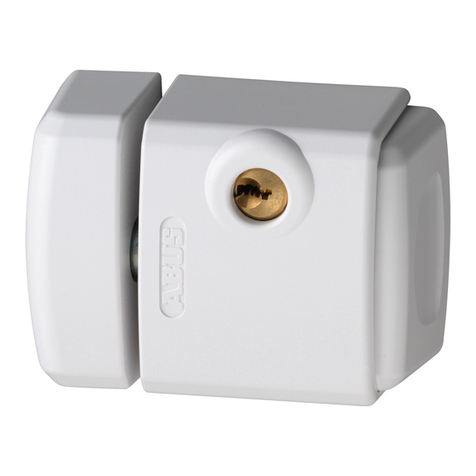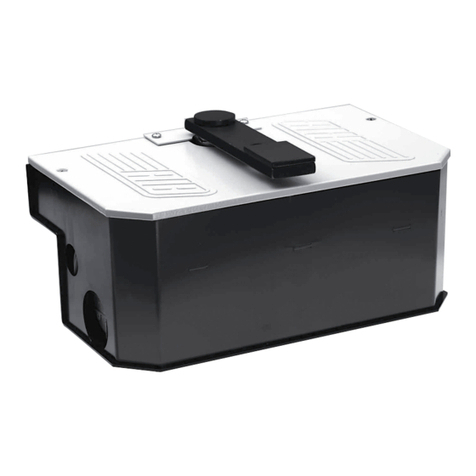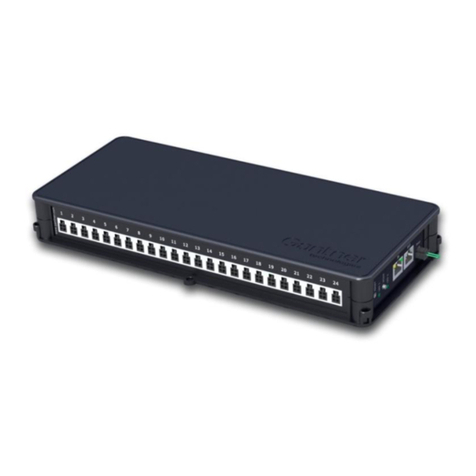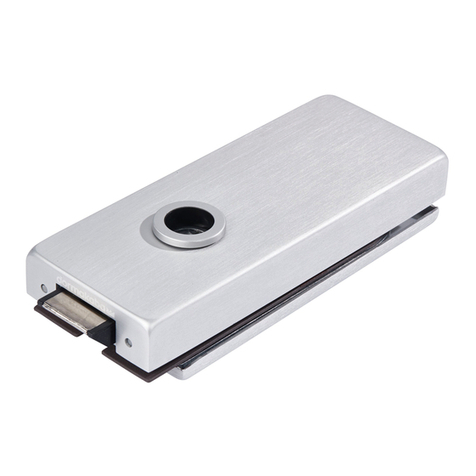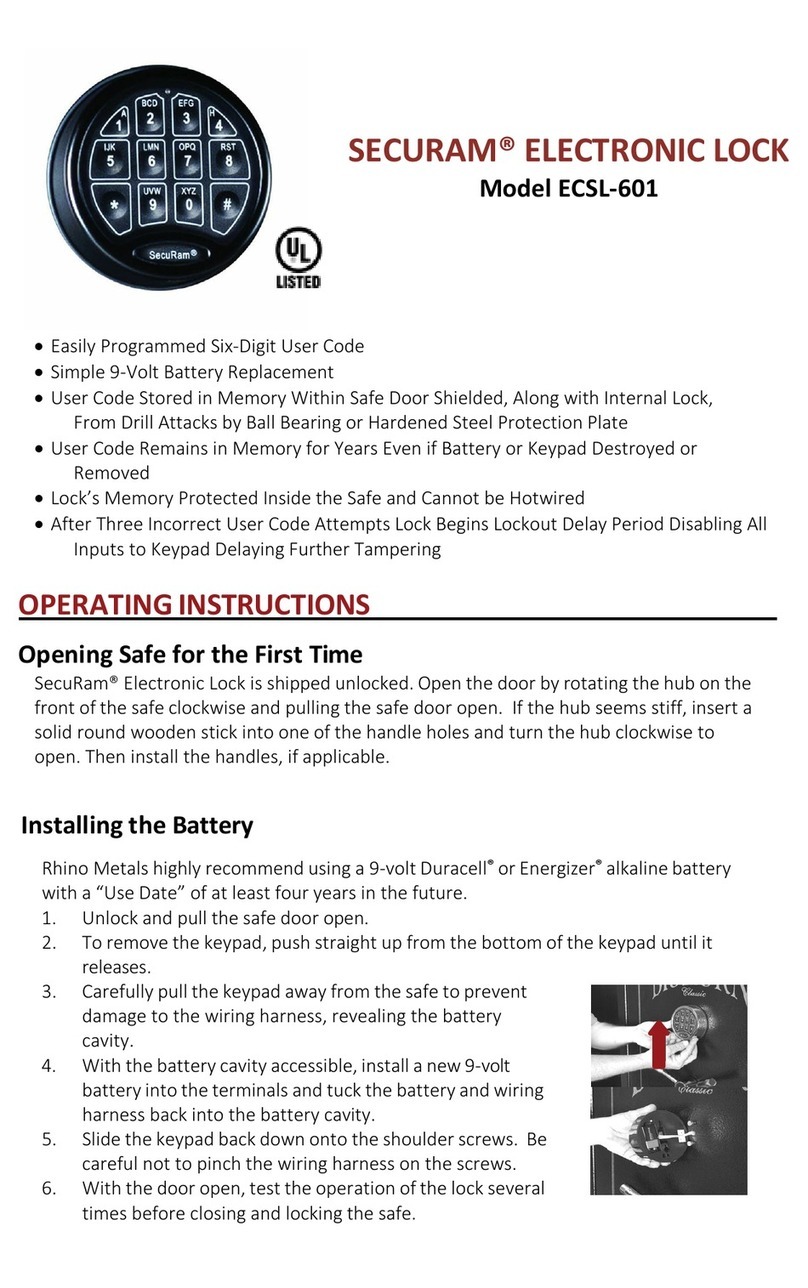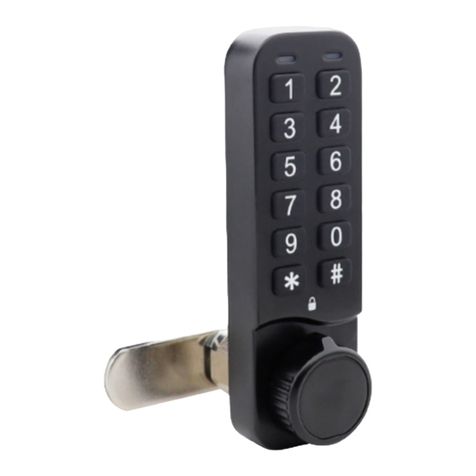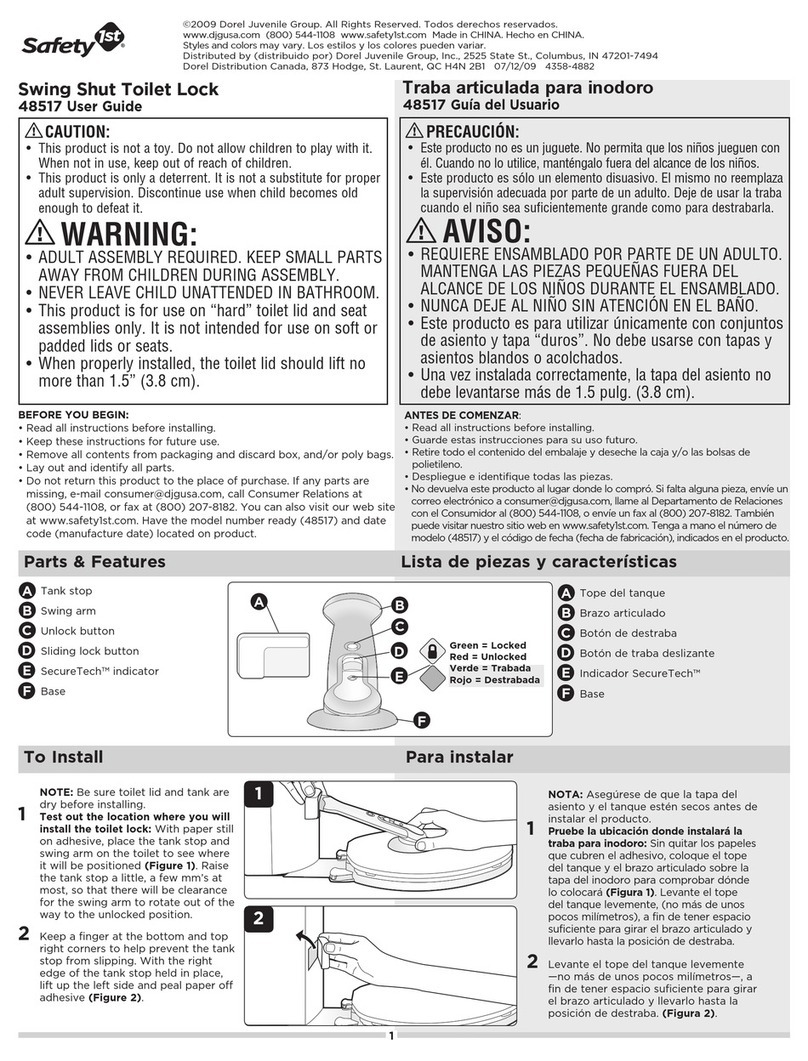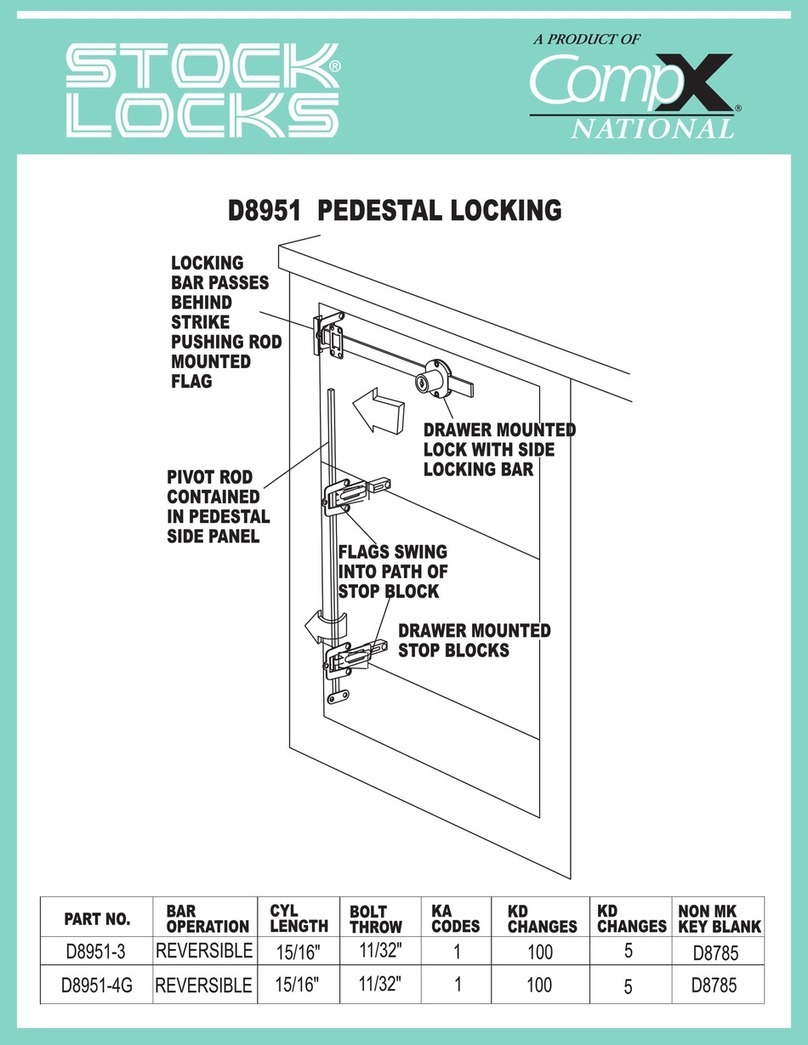
V. Montageaanwijzing:
Belangrijke aanwijzingen:
1. Voor de montage dient u de afstelling van het raam resp. de deur te contro-leren. Zorg
ervoor dat het raam / de deur probleemloos geopend en gesloten
kan worden.
2. Meet na of de in a. 1 aangegeven min. afmetingen daadwerkelijk
beschikbaar zijn.
3. De boordieptes en schroeengtes moeten aan het gevelelement aangepast worden.
4. Voorkom doorboren en -schroeven. Eventueel met een booraanslag werken of de
schroeven inkorten. Bij het boren geen beslag, afdichtingen of ruiten beschadigen.
Voorbereiding
De bestaande raamgreep in de ,open’- positie (horizontaal) zetten en verwijderen.
Montage van de slotkast
1. De afstandshulzen (8) (a. 4) voor de gaten B (a. 4b) inkorten. De afstandshulzen (8)
moeten 5–6 mm dieper liggen (a. 4a).
2. De greep 180 draaien en de schoot uit de slotkast trekken. Afdekkap (6) van de greep
van onder af m.b.v. een van de vierkantstien (4) of (5) verwijderen.
3. De lengte van de vierkantsti (4) of (5) aan de hand van situatie bepalen. De lange sti
eventueel inkorten.
4. De vierkantsti (4) of (5) voor het bepalen van de juiste positie in de slotkast steken
(a. 5a) en de raamgreep in de ,open’-positie (horizontaal) zetten (a. 5a). Indien de
montagegaten B > 12 mm zijn, de uitvul-ringen (9) op de nokken plaatsen (a. 5b).
De slotkast tegen het raam plaatsen en met 2 M5x35 mm of M5 x 45 mm bouten met
verzonken kop monteren. Wanneer er in het raam geen schroefdraad aanwezig is
moeten 2 4,8x25 mm schroeven gebruikt worden. De afstandhulzen (8) (a. 4) hebben
dan geen functie.
5. De FO500 weer in de ,gesloten’-positie (verticaal naar beneden) zetten
(a. 6) en de vierkantsti (4) of (5) m.b.v. een van de 5,5x60 mm schroeven
verwijderen.
6. De schoot in de slotkast schuiven (a. 7) en de vierkantsti (4) of (5) met lichte ha-
merslagen aanbrengen.
Montage van de sluitkast
1. De kierstandhouder (a. 8) is standaard voor naar links opengaande ramen of deuren
voorgemonteerd. Voor naar rechts opengaande ramen of deuren moet de kierstand-
houder anders gemonteerd te worden. Verwijder hiervoor het borgingsplaatje en de
pen. De kierstandhouder in beide richtingen 180 draaien (uitsparing A moet altijd naar
onderen en naar het raam wijzen). Breng de pen en het borgingsplaatje weer aan.
2. De afdekkappen m.b.v. een schroevendraaier van onder af uit de slotkast stoten.
3. Raamgreep in ,kiep’-positie zetten (a. 9).
4. De sluitkast (2) moet op gelijke hoogte en evenwijdig met de slotkast (1) gemonteerd
worden. Hiervoor de sluitkast (2) met de montageplaat (3) en/of opvulplaatjes (10)
uitvullen.
5. De opvulplaatjes (10) moeten tussen montageplaat (3) en sluitkast (2) geplaatst worden.
De sluitkast dient nu met de kierstandhouder in het midden van de uitsparingen in
de schoot tegen het kozijn geplaatst worden. Met een pen de buitencontouren op het
kozijn markeren.
6. Raamgreep in de ,open’-positie (horizontaal) zetten.
7. De sluitkast, montageplaat en of opvulplaatjes verwijderen. Verdere montage is aan-
kelijk van de opdekmaat:
Opdekmaat > 14 mm
(montage met montageplaat en eventueel opvulplaatjes)
Montageplaat (3) op de gemarkeerde positie tegen het kozijn plaatsen,
schroefgaten B aekenen en voorboren (zie boortabel), en m.b.v. 2 5,5x60 mm schroeven
monteren. Opm. indien kunststof zonder staal versterking;
ABUS anker incl. M6 bevestiging toepassen (schroefgat D). De schuine schroefgaten C voor-
boren (zie boortabel) en 2 5,5x60 mm schroeven schuin aanbrengen.
De montageplaat (3) m.b.v. opvulplaatjes (10) uitvullen tot de opdekmaat bereikt is.
Monteer de sluitkast (2) incl. opvulplaatjes (10) op de montageplaat (3) m.b.v. 2 M6x35 mm
(zelorende schroeven) boutjes bij tot 5 mm en 2 M6x40 mm (zelorende schroeven)
boutjes bij 6 tot 11 mm opvulplaatjes. Montage door schroefgaten A (a. 14).
Opdekmaat 0–13 mm
(montage zonder montageplaat en eventueel opvulplaatjes)
Sluitkast (2) op de gemarkeerde positie tegen het kozijn plaatsen.
Schroefgaten A aekenen en voorboren (zie boortabel).
Sluitkast (2) indien nodig uitvullen met opvulplaatjes (10) (a. 12)
en m.b.v. 25,5 x60 mm schroeven door de schroefgaten A monteren.
Functies controleren
Raamgreep onder = totale vergrendeling
Raamgreep horizontaal = raam/deur kan volledig geopend worden
Raamgreep boven = kiepstand (kierstandhouder)
Na het aanbrengen van het inbusboutje de sti van de afdekking (6) areken.
Breng de afdekkappen (6) en (7) aan (a. 15).
VI. Bediening
De normale functies van het ingebouwde draai/kiepbeslag worden door de FO500 uit-
gevoerd. De extra kierstandhouder is alleen in de kiepstand actief. We spreken hier van
een zogenaamde aanwezigheidsbeveiliging; optimale beveiliging echter uitsluitend
bij totale vergrendeling Vergrendelen d.m.v. drukcilinder / ontgrendelen m.b.v. een
sleutel.
Tip
Ook in de kiepstand de drukcilinder indrukken (kinder- en bedieningsbeveiliging).
V. Istruzioni per il montaggio:
Avvertenza importante:
1. Prima del montaggio vericare per favore la regolazione della nestra
risp. della porta nestra. Se necessario registrare nuovamente le guarnizioni
metalliche anché la nestra (la porta-nestra) si chiuda e si apra
perfettamente.
2. Vericate anche che le misure minime indicate nell’ill. 2 esistano nelle
vostre nestre/ porte-nestre.
3. Le profondità per trapanare i fori, risp. le lunghezze delle viti devono
essere adattate alle condizioni particolari.
4. Evitare che la punta del trapano risp. la vite fuoriesca dall’altra parte! Se
necessario lavorare con arresto del trapano o accorciare le viti.Quando si
trapana, non danneggiare parti mobili, guarnizioni o vetri.
Preparazione
Aprire le maniglie esistenti e svitarle.
Montaggiodellamanigliadellanestra
1. Tagliare a misura i distanziatori (8) (ill. 4) per i fori b (ill. 4b).I distanziatori (8) devono
essere inlati di circa 5–6 mm (ill. 4a).
2. Chiudere di 180° la FO500. Slare il chiavistello lateralmente dalla scatola della
serratura (1). Far uscire dal basso il coperchietto (6) della maniglia della nestra con uno
dei due perni quadri (4) o (5).
3. Scegliere la lunghezza del perno quadro (4) o (5) orientandosi sulle condizioni particola-
ri del montaggio e se necessario il perno lungo deve essere accorciato.
4. Inserire nella maniglia della nestra il perno quadro (4) o (5) per il centraggio (ill. 5a).
Aprire FO500 (ill. 5b). Con diametro dei fori B (maggiore o uguale) a 12 mm inlare sui
naselli (ill. 5a). Mettere sul battente della nestra e avvitare con le viti a testa svasata
M5 x 35 mm o M5 x 45 mm allegate alla confezione. Se non esistono fori lettati met-
rici, si devono usare le due viti allegate 4,8 x 25 mm. I distanziatori (8) (ill. 4) in questo
caso non vengono utilizzati.
5. Richiudere la FO500 (ill. 6) e slare nuovamente il perno quadro (4) o (5) con l’aiuto di
una delle due viti di ssaggio 5,5 x 60 mm (avvitare leggermente).
6. Inlare il chiavistello nella serratura, lateralmente come da ill. 7. Inlare il perno quad-
ro (4) o (5) e inserirlo con colpi leggeri.
Montaggio della cassa della serratura
1. La staa di bloccaggio (ill. 8) è montata per nestre che aprono a sinistra. Per nestre
che si aprono a destra, la staa di bloccaggio deve essere spostata. Allo scopo tirare
fuori la lamiera di sicurezza e svitare il perno di ssaggio. Girare la staa di bloccaggio
in direzione longitudinale e trasversale di 180°. L’incavo A (ill. 8) deve indicare sempre
verso il basso e verso il telaio. Inserire il perno di ssaggio e inserire bene premendo la
lamiera di sicurezza.
2. Con un cacciavite staccare dal basso i coperchietti (6) della cassa della serratura (2),
facendoli passare attraverso i fori di ssaggio dal basso.
3. Mettere la maniglia della nestra in posizione inclinata (ill. 9).
4. La cassa della serratura (2) deve stare alla stessa altezza e parallelamente alla scatola
della serratura (1). Allo scopo sotto la cassa della serratura (2) si mette il listello da
avvitare (3) e se necessario piastrine (10) (ill. 10).
5. Le piastrine (10) si trovano in questo caso fra listello da avvitare (3) e cassa della ser-
ratura (2). La staa di bloccaggio viene ora allineata al centro mediante gli incavi del
chiavistello (ill. 11). Con una matita appuntita disegnare i contorni esterni sul telaio.
6. Aprire la maniglia della nestra.
7. Togliere cassa della serratura (2) e piastrine (10) e, a secondo di come deve essere fatto il
montaggio, procedere nel modo seguente:
Altezza d’incastro: a partire da 14 mm
(con listello da avvitare e in caso con piastrine)
Poggiare il listello da avvitare (3) sulla posizione disegnata.
Disegnare i fori B e trapanare (vedi tabella per trapanazioni).
Avvitare saldamente con due viti 5,5 x 60 mm.
Trapanare al centro (vedi tabella delle trapanazioni) attraverso i fori
obliqui C del listello da avvitare (3) e avvitare saldamente con viti
5,5 x 60 mm (ill. 13).
Se necessario compensare il listello da avvitare (3) con piastrine (10) per farlo arrivare allo
spessore dell’incastro.
Fissare la cassa della serratura (2) incl. le piastrine (10) sul listello da avvitare (3) facendo
passare per i fori A (ill. 14); no a 5 mm di piastrine (spessore) utilizzare 2 viti M6 x 35 mm
(viti automaschianti); da 6 a 11 mm di piastrine (spessore) utilizzare 2 viti M6 x 40 mm (viti
automaschianti).
Altezza d’incastro: 0–13 mm
(senza listello da avvitare, in caso con piastrine (spessori)
Mettere la cassa della serratura (2) sulla posizione disegnata. Disegnare i fori A e trapanare
(vedi tabella delle trapanazioni).
Se necessario mettere sotto la cassa ella serratura (2) piastrine (10) (spessore) (ill. 12) e
avvitare con viti 5,5 x 60 mm.
Vericare il funzionamento
Maniglia in basso = bloccaggio totale
Maniglia orizzontale = la nestra si può aprire completamente
Maniglia in alto = funzione asta di bloccaggio
Dopo il ssaggio della vite senza testa, troncare il perno al coperchio (6)
Inserire i coperchietti nella maniglia della nestra e nella cassa della
serratura (2) premendo (ill. 15).
VI. Uso
Le normali funzioni del ferramento della nestra incorporato vengono espletate dalla
FO500. La funzione in più della staa di bloccaggio è attiva con nestra inclinata. In
questo caso si tratta di una sicura durante la presenza di persone in casa. Il blocco
totale lo si ha premendo in dentro il cilindro. Si apre con la chiave.
www.abus.com
n Technische wijzigingen voorbehouden.
Geen aansprakelijkheid voor vergissingen en drukfouten.
©ABUS | D 58292 Wetter | Germany
Ci si riservano modifiche tecniche. Per errori e refusi
di stampa non ci si assume alcuna responsabilità.
©ABUS | D 58292 Wetter | Germany
390308 | 10/2014
FO500_Montageanleitung_Internet_DEFRGBNLIT_390308.indd 6 29.10.14 10:53


